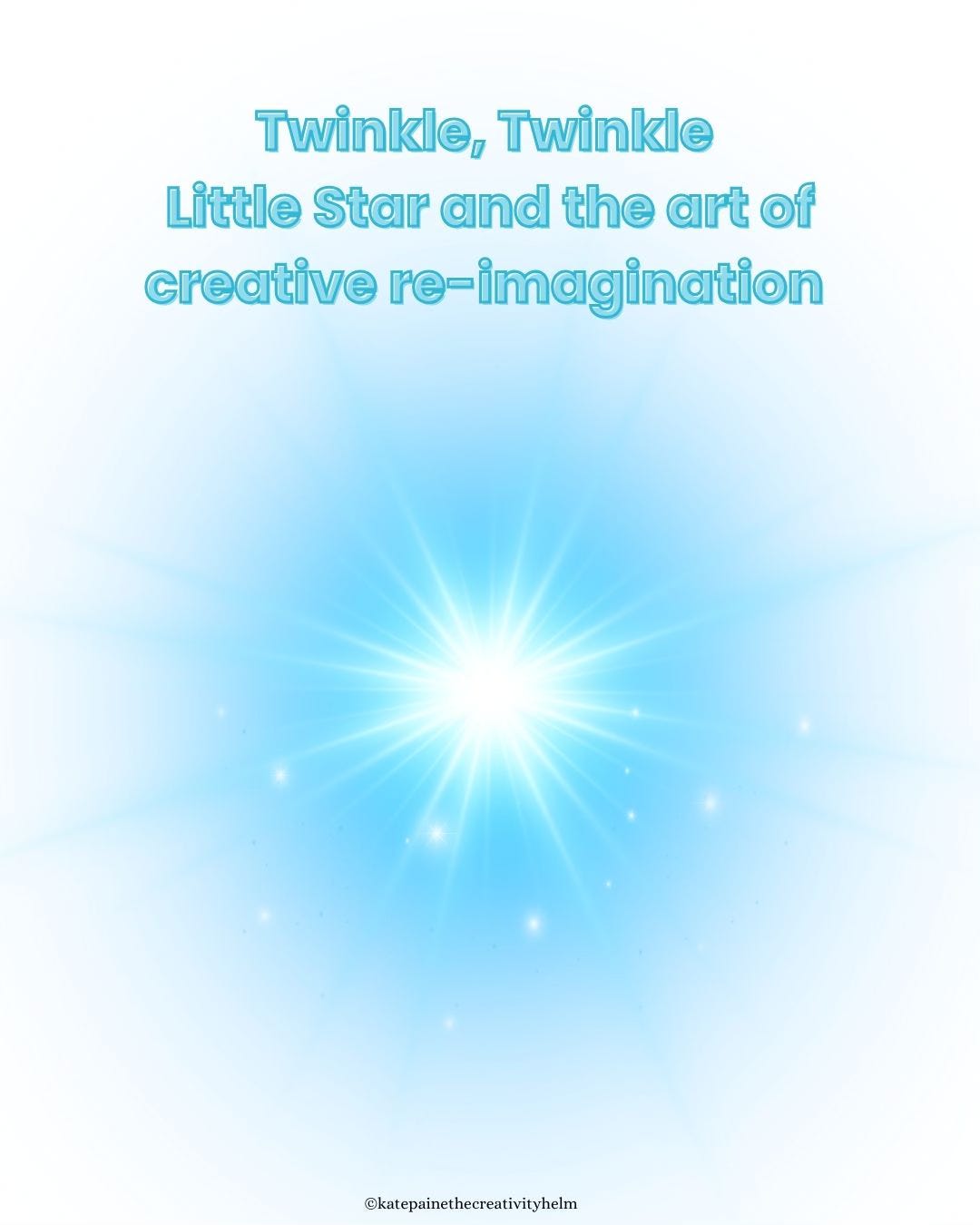Twinkle, Twinkle Little Star and the art of creative re-imagination
Or how everything old can be new again
Just about every time I sit down at the piano with the thought of making something up it begins by sounding like something else.
Am I cheating? Am I copying? Is this the end of all creative inspiration, and are we all doomed to eventually sound exactly the same as everybody else?
There’s no way you can listen to any kind of music and not be aware that so many elements reappear across centuries, across genres, and from song to song.
Oodles of pop songs have the same chord progressions, snippets of melodies make us think of other songs or something written by a composer a few hundred years ago, and a simple rhythm could easily belong to a thousand songs or more, so just take your pick.
But Mozart did it
Lately, one of my piano students has been playing Mozart’s take on Twinkle, Twinkle Little Star. It’s called Twelve Variations on "Ah vous dirai-je, Maman" and he composed it in around 1781 (or maybe 1782). It’s based on the French folksong “Ah vous diary-je, Maman”, which was first published in about 1761, and is itself based on a melody dating from about 1740.
Of course, Mozart had no idea the melody he borrowed would eventually become part of a world famous children’s lullaby about twinkling stars, and also be used as the base for other children’s songs, such as the Alphabet song and Baa Baa Black Sheep. But I think he would be chuffed, especially given his approach to the tune.
He starts with the main theme we all know and love, and then continues with twelve variations based on the melody. Some of these variations are pretty complex, but the fascinating thing is that because we’ve just heard the theme laid out very simply, we can still ‘hear’ it in the variations.
This, of course, is simply the magical way our brains work, their ability to recognise and anticipate patterns a wonder to behold.
Done and dusted? I don’t think so
But another wonder is how so much of what we do is based on something already done. And how each time we take something that already exists and do something with it, we manage to create something new.
It’s more than a retelling. It’s a reinvention, a reinterpretation, a re-imagination, a revamp, a reframing.
And it doesn’t have to be music. The same holds for any creative endeavour. Start with something you know and go from there. Best of all, and as with all things creative, there’s no right or wrong way to do it. You’re the one calling the shots and with the freedom to do things your way.
Which is exactly what Mozart did a few centuries ago when he decided to borrow a simple little tune and make it his own.
One of my students wants to learn how to play chords and sing at the same time. Chords are two or more notes played together to create harmony. If you know the relationship between the notes you can play simple chords or make up your own arrangements while you sing.
It’s the same principle as guitarists strumming chords, and it’s an easy way to get started playing and singing songs.
To get my student started, I’ve got her working on what chords to put with…can you guess?
Yep, Twinkle, Twinkle Little Star.
I’m pretty sure Mozart would approve of my lovely tween having a go at this melody, just like he did a few centuries ago.
Maybe there is truth in the saying that there’s nothing new under the sun, but I prefer to think of it as there being infinite possibilities for everything old to become new again.
And I think Mozart would agree with me.
Don’t think you’re creative? Let me change your mind at The Creativity Helm, helping you boost your creativity, step-by-step 💡




